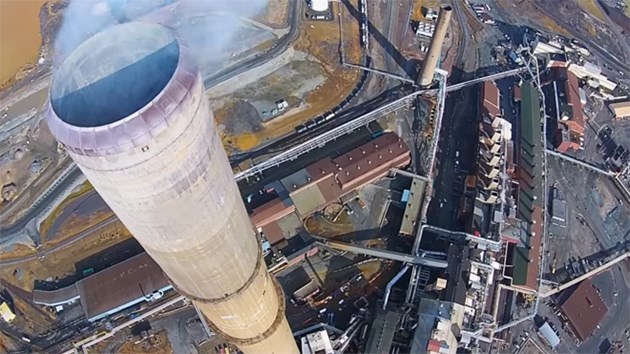A press release dated today published on Vale's website says the company plans to eventually demolish its iconic Superstack in Copper Cliff and replace it with two smaller stacks.
Here are six facts about the Superstack you might not know:
- Construction of the Superstack began in 1970 at a cost of $25 million and entered into full operation in 1972. The Superstack was built to disperse sulphur gases and other byproducts of the smelting process away from the City of Sudbury.
- The Superstack is 1,250 feet (381 metres) high, the tallest chimney in the western hemisphere and the second largest in the world. It is also the second tallest freestanding structure of any type in Canada, behind the CN Tower.
- The Superstack is 35 metres wide at the bottom with one-metre-thick walls. At the top it is 16 metres wide with 25 cm thick walls. It has 937 tonnes tons of reinforcing steel buried in its concrete shell and a stainless steel liner that weighs 17,585 tonnes.
- Following completion of the stack’s concrete shell, a top-to-bottom vertical steel ladder was installed inside with rest platforms for maintenance.
- There is a steel flue system to carry gases from Vale’s Copper Cliff Smelter to the Superstack. This system currently carries gases travelling at a top speed of more than 85 kilometres per hour and at a maximum temperature of 390 degrees Celsius.
- Construction of the Superstack was followed by environmental reclamation projects across the City of Greater Sudbury including the liming and seeding of more than 3,200 hectares as well as the planting of approximately 300,000 trees annually.
Here's what the press release says:
Due to the significant reduction of atmospheric emissions at Vale’s operations in Sudbury, Ontario, today Vale announced its plans to take the iconic 1,250 foot (381 metre) Superstack out of service by the second quarter of 2020.
The Superstack will be replaced with two smaller and more efficient 450 foot (137 metre) stacks.
"We are proud to be reducing emissions to a point where the Superstack is no longer required,' said Stuart Harshaw, Vice-President of Vale’s Ontario Operations, in the release.
"Taking the Superstack out of service is a great symbol of how far Vale has come in terms of shrinking our environmental footprint and making Greater Sudbury a better place to work and live."
The two smaller and more efficient stacks will require far less energy to operate than the Superstack, which will reduce greenhouse gas emissions from Vale’s Copper Cliff Smelter by approximately 40 per cent.
At the same time, Vale’s Clean AER Project will reduce particulate emissions by 40 per cent and dramatically reduce SO2 emissions by 85 per cent.
By changing to two smaller and more efficient stacks, natural gas consumption is estimated to drop by nearly half, from 94 million cubic metres per year to 48 million cubic metres per year.
This savings is equivalent to the average fuel consumption of approximately 17,500 homes, or approximately 1/3 of all the households in Greater Sudbury.
Construction of the two new stacks will begin in early 2017 and will take approximately two years to complete.
The Superstack will be placed into care and maintenance mode in the second quarter of 2020 as extensive study is conducted to determine the best way to safely and carefully demolish its concrete shell. There is no immediate need for the shell to be demolished and it is expected to remain a part of the Sudbury skyline for several years to come.



